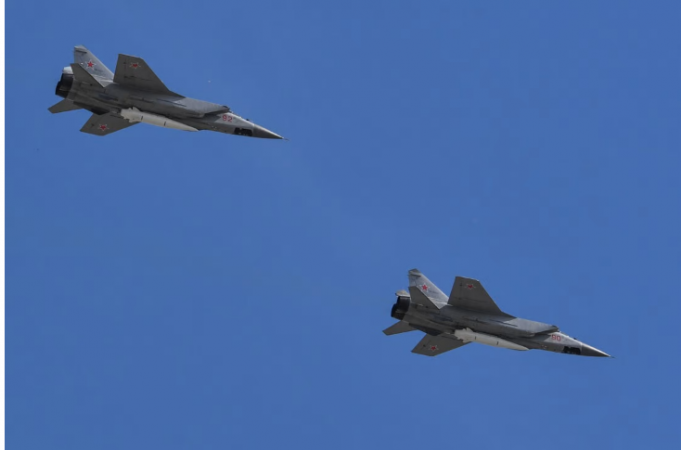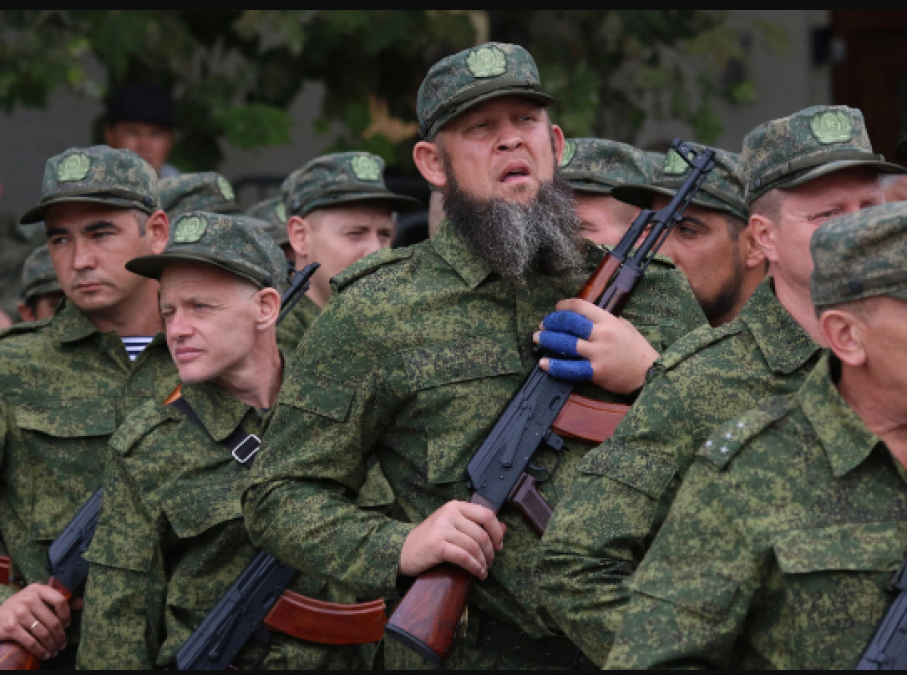
Kiev: The smaller weapons that Vladimir Putin has been urged to use may give the US and its allies crucial hours or even days of warning as their chicken game over Ukraine escalates into a new round of nuclear threats.
Lower-yielding tactical weapons are locked up in about a dozen warehouses across Russia, and it would take time to transport them to launchers, while Russia's long-range missiles and bombers are kept on constant alert, ready to fire in just minutes to ensure they are not destroyed by a pre-emptive strike.
Weapons are removed from storage facilities when they reach a certain level of readiness and transported elsewhere, possibly for days at a time. Satellites or other technologies would be able to pick this up, according to Pavel Podvig, a nuclear security specialist at the UN Institute for Disarmament Research in Geneva. That would be the key message.
There are currently no indications of such preparations, according to US and European officials, and the nuclear threats are merely symbolic.
Also Read: Elon Musk's tweet on Russia-Ukraine war sparks row
But as a Ukrainian counteroffensive gains ground on Russian forces, including territory the Russian president formally annexed last week, the Kremlin has once more tried to incite fear by hinting that a further escalation may involve weapons not used in war since 1945.
The threats are a part of a larger campaign by the Kremlin to coerce the United States and Europe into withdrawing their support for Ukraine and pressuring Kiev to enter negotiations on Moscow's terms.
Putin is attempting to widen divisions within Europe over the cost of maintaining support for Ukraine in an effort to sway public opinion in crucial states as tensions rise as Europeans prepare for a challenging winter as a result of Russia's triggering of an unprecedented energy crisis by cutting gas supplies.
The Kremlin leader's recent efforts to demonstrate his determination to fight to the bitter end include his decision to call up 300,000 reservists to support Russia's faltering army and the hasty annexation of the occupied territories.
Alarm was raised that other parts of the continent's energy infrastructure could be affected by explosions that resulted in leaks in important pipelines under the Baltic Sea last week, which the US described as deliberate sabotage.

But as of yet, Kyiv's allies remain steadfast in their determination to keep supplying arms.
Many in Moscow are now urging Putin to ratchet up the threats in response to this.
Dmitri Trenin, a specialist at the Council on Foreign and Defence Policy, which advises the Kremlin, stated last week in remarks posted on the organization's website that included discussion of a nuclear strike on the US and Europe, "Fear is the only thing that can stop our opponent." "Bring back the fear."
Ben Wallace, the UK's defence minister, gave the impression of Western assurance on Sunday when he said, "We think it is highly unlikely" that Putin will use nuclear weapons, based on readouts from meetings with the leaders of China and India who spoke to the Russian president last month.
Putin has been vague in public, stating that Russia would defend its territory, including the recently annexed regions of Ukraine, with "all weapons systems available to us."
He implied that he wouldn't see any Russian use of atomic weapons now as breaking a taboo by saying that the US had "set a precedent" by using them against Japan during World War II. After the most recent incident, a key lieutenant was even clearer over the weekend, urging the deployment of "low-yielding nuclear weapons."
An estimated 1,900 of these Cold War-era weapons, along with the missiles and aircraft required to deliver them, are still in storage in Russia.
Although the use of a nuclear warhead might not be sufficient to change the course of the battle, where the front stretches over 1,200 km, it might be Putin's attempt to shock Ukraine and its Western allies into resigning.
According to a source close to the Defence Ministry who spoke on the condition of anonymity to discuss private matters, if the Russian leader decided to use such a weapon, he would probably choose a military target in Ukraine as a demonstration strike.
Also Read: Kyiv gains on the battlefield as thousands of Russians who were mobilized are sent home
As the invasion enters its eighth month, the temptation for the Kremlin to resort to its last option is growing, according to Natia Seskuria, an associate fellow at the Royal United Services Institute in London. Even so, any use of nuclear weapons would be a first, as they would be put to use to secure gains from an invasion of another nation.
The minimum yield of the tactical weapons used by Russia is 10 kilotons, or 10,000 tonnes of TNT. That would be less than the 15 kiloton nuclear bomb that was dropped on Hiroshima by two-thirds.
Daryl Kimball, Executive Director of the US-based Arms Control Association, said, "These are not tiny nukes." "This would be the worst thing we've seen since Hiroshima," someone said.
When that explosion occurred, 12 square kilometres (5 square miles) of the Japanese city were completely destroyed, killing 70,000 people directly and tens of thousands more from radiation exposure.
However, the Royal United Services Institute stated in a report published earlier this year that a low-yield warhead detonated at relatively high altitudes would lessen the fallout from the nuclear strike, helping to keep civilian casualties to a minimum.
Limited nuclear use as a form of coercion may seem less absurd in this situation, the report said. However, it might still put Russian soil at risk of radioactive fallout without succeeding in frightening Kyiv's supporters into a concession.
Any such action would be met with a "catastrophic" response, the US has warned, without specifying what that would entail.
Former US Army in Europe commander Ben Hodges stated in a media interview on September 21 that the US would not respond with a nuclear strike but rather with conventional retaliation, possibly by destroying the Black Sea Fleet or Russian bases in Crimea.
That would still represent a direct confrontation between the two former Cold War adversaries, which in turn might inspire a Russian nuclear strike against the US.
The US has taken great care so far to keep its forces out of direct conflict with Russian forces.
Also Read: Zelensky criticises Russian referendums and praises the "brilliant result" of the prisoner exchange.
"There is absolutely no guarantee that the two sides could control the nuclear use and it wouldn't quickly escalate into an all-out nuclear conflagration once nuclear weapons are used, even in a so-called limited way," said Kimball.
Yevgeny Buzhinsky, a retired Russian general who currently serves as the director of the PIR Centre, a think tank in Moscow, claimed that the Kremlin has a variety of means by which to escalate and convey its message without endangering the world.
Russia might intensify its attacks on Ukraine's civilian infrastructure, destroying more power plants in addition to rail and other facilities that transport US and European military hardware.
He asserted that using nuclear weapons was unnecessary to defeat Ukraine.